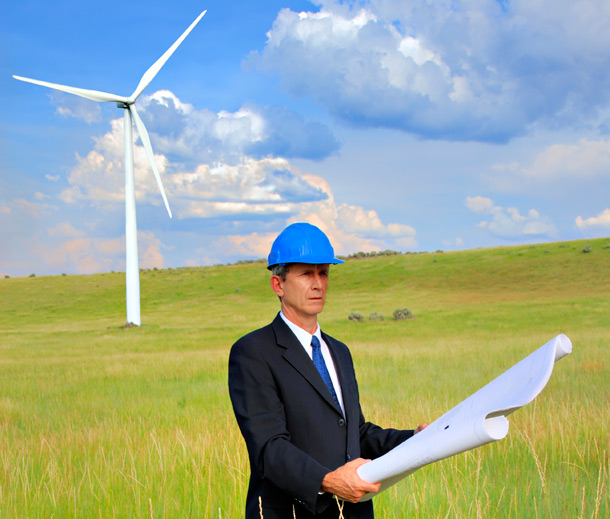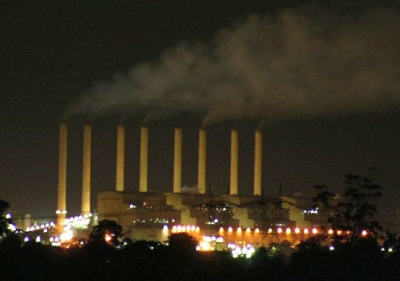The following guest post is republished (with permission from the author) from Opinion Online. Tom Biegler, who wrote this piece, worked with Martin Nicholson and me on our 2010 Energy paper, How carbon pricing changes the relative competitiveness of low-carbon baseload generating technologies. Tom noted to me that he:
carefully avoided mentioning nuclear, which can do the job, only because it would deflect attention from my arguments
For the audience of BNC however, I’m sure this conclusion about nuclear as a viable and proven fossil-fuel replacement comes as no surprise!
—————————
Guest Post by Dr. Tom Biegler. Tom is a physical chemist and former CSIRO divisional head, spent much of his career managing technological research and development related to the resources industry. He is a Fellow of the Academy of Technological Sciences and Engineering and the Royal Australian Chemical Institute.
To go with Clean Energy Week comes a new report from The Climate Institute telling us that Australians overwhelmingly support renewable energy but don’t understand how carbon pricing will work. Not surprisingly, they are also sceptical about the political motivations behind its introduction. I think their scepticism is misdirected. Their target should be the carbon tax itself.
Carbon pricing (of which the tax is a temporary start) is the standard economic remedy for problems like carbon dioxide emissions. As Tim Colebatch, an economist, wrote in The Age recently: “Give us a price incentive, and we find ways to reduce emissions with little damage to profits or our standards of living”.
![]() The tax should work in two ways. It should encourage substitution of high-emission fossil fuels by lower-emission alternatives (“our clean energy future”, as the government puts it); and discourage energy usage in general (“behaviour change”) by raising energy costs. Clean energy will cost more. After all, if low-emission technologies were not more expensive there would be no need for a tax.
The tax should work in two ways. It should encourage substitution of high-emission fossil fuels by lower-emission alternatives (“our clean energy future”, as the government puts it); and discourage energy usage in general (“behaviour change”) by raising energy costs. Clean energy will cost more. After all, if low-emission technologies were not more expensive there would be no need for a tax.
Fine in principle, but will it work?
I need to assert here that I am not a climate sceptic. And I see the timing of Australia’s tax and its explicit contribution to global climate change as important but separate issues.
The carbon price policy is based on two premises: the right technologies will be there when needed; and significantly less energy will be used as its price rises.
Underlying the whole matter is energy’s key economic role. Energy is the lever that multiplies the output of human personal effort to give us our unprecedented productivity and prosperity. Energy builds economies. Whatever its shortcomings, the bonanza of fossil fuels we inherited has given us our present living standards.
Both of the above premises have major problems. Firstly, in my opinion (after all, this is a journal of opinion) the expectations regarding renewable energies have been raised to quite unreasonable levels. The proposition as accepted by the public is that feeble, intermittent solar, wind, ocean energy, etc, can effectively replace intensely combustible, high energy fossil fuels as drivers of prosperity. The enormous scale and associated cost of collecting and processing this weak energy is what makes the proposition extraordinary. Extraordinary propositions need extraordinary evidence. That’s the sceptics’ slogan, and that’s why I am sceptical about renewables.
The evidence is in fact very ordinary.
We have been hearing about the prospects of renewables for decades. They usually come from promoters and interested parties like environmental and renewable energy advocacy or research groups. The public has been blitzed about renewables and in particular the wonders of solar energy. Not surprising that they support it. There has undoubtedly been some brilliant inventiveness and innovation. The intrinsic weakness of the energy sources remains the big economic stumbling block. And it should never be forgotten that the promoters, the scientists and inventors, the technology developers and vendors, are people who thrive on optimism. I don’t blame them. A positive outlook goes with the territory, but all their claims have to be heard in that light.
These are not idle observations. I have been scrutinising alternative energy developments for nearly half a century. It is 35 years since my first letter to The Age attacked the myth that solar, wind and tidal energy are somehow ‘free’. I was involved for 20 years in managing R&D related to the resources industry. Taking ideas and innovative technologies to commercial success is tough. The financial discipline of the private investor is an essential ingredient, so I am especially wary when governments get involved in picking winners.
The second premise, regarding energy conservation, does not get the attention it deserves. We hear little other than it’s a no-brainer and that energy efficiency is a wonderful ‘resource’ that will respond to ‘behaviour change’. Here we need to remember that about 80% of our primary energy goes to the productive activities of industry and commerce that underlie prosperity. ‘Behaviour change’ around the home therefore cannot contribute much to national energy savings.
The barrier to conserving energy on a large scale is the strong quantitative connection between GDP and energy. Energy productivity (or its reciprocal energy intensity) is the national economic indicator that links the two. The table shows energy productivities for the OECD countries, which generally have more reliable statistical data than the rest of the world, especially the developing economies. Monetary units are in constant US dollars, year 2000, adjusted to purchasing power parity. Energy is measured in gigajoules (GJ) of total primary energy supply.
OECD Energy Productivities in 2009
$ PPP (US, year 2000)/GJ
|
Iceland |
48 |
Norway |
160 |
|
Canada |
96 |
Netherlands |
161 |
|
Estonia |
96 |
Chile |
163 |
|
Finland |
111 |
Germany |
168 |
|
Czech Republic |
117 |
Japan |
172 |
|
Korea |
119 |
Luxembourg |
185 |
|
United States |
125 |
Portugal |
190 |
|
Australia |
128 |
Turkey |
193 |
|
Slovak Republic |
130 |
Austria |
199 |
|
Belgium |
133 |
Spain |
199 |
|
New Zealand |
141 |
Denmark |
207 |
|
Hungary |
142 |
United Kingdom |
212 |
|
Poland |
145 |
Israel |
213 |
|
Sweden |
151 |
Italy |
214 |
|
Mexico |
154 |
Greece |
216 |
|
Slovenia |
154 |
Switzerland |
231 |
|
France |
159 |
Ireland |
235 |
The intent in using these units is to see how actual physical production levels are related to primary energy. Economists are generally reluctant to make such international comparisons because of the uncertainties in the assumptions. And there are some decidedly odd results in the table, though the numbers really ought to have error bars attached to underline their inherent lack of precision.
But in my view the data show clearly enough that most OECD countries have energy productivities falling within a surprisingly narrow range. That is, a given amount of energy creates around the same amount of wealth, in terms of goods and services. The average (and median) figure is around $160/GJ. At least some of the more extreme numbers can be rationalised on the basis of individual country characteristics.
My conclusion is that the physical connection between energy and living standards, as represented by GDP, constrains any reduction in energy usage unless there is a corresponding productivity rise.
The good news from these numbers is that Australia’s $128/GJ, contrary to frequent claims that its energy performance is inferior to that of other economies, puts it roughly where one would expect for its geographic size and the strength of its mining and agricultural sectors, which are big energy consumers. The bad news is that this good news extinguishes any ‘easy’ catch-up energy savings, and productivity rise, that would go with the nation’s supposed poor energy performance.
Energy productivity goes up as technical energy efficiency improves (as happens for example with modern power stations) and energy wastage declines. Both mechanisms, stimulated by rising energy prices, have probably been occurring. The question is, what ultimate productivity increase and energy savings can be expected? In Australia productivity improvement has been around 1% to 2% per annum. The official position seems to be that this will go on forever and even rise. This seems very optimistic. The OECD numbers might encourage an eventual target perhaps 20% higher than now but this is speculation. The prudent course is eventually to expect diminishing returns over time rather than the raised efficiency target that, for example, our latest government report on energy efficiency recommends. This topic could do with a lot more research.
In short, the official position on the workings of a carbon price is heavily biased towards optimism in respect of both energy technology and conservation. In my view, when the national wellbeing is at stake policy should be set with prudence and caution, not optimism. After all, every economic modelling exercise, from Stern to Garnaut, tells us that higher energy prices will permeate the whole fabric of our society and impact on our GDP.
Government should act responsibly by encouraging understanding and debate on the costs and benefits of all options, including adapting to climate change rather than abandoning present energy sources. On the balance of probabilities, relying on the carbon tax to achieve major emission reductions will likely turn out to be a mistake.
—————–
To register comments, go to the Brave New Climate Discussion Forum, here: http://bravenewclimate.proboards.com/index.cgi?action=display&board=bncblogposts&thread=301
Filed under: Emissions, Policy, Renewables






.png)








To register comments on this blog post, go here: http://bravenewclimate.proboards.com/index.cgi?action=display&board=bncblogposts&thread=301